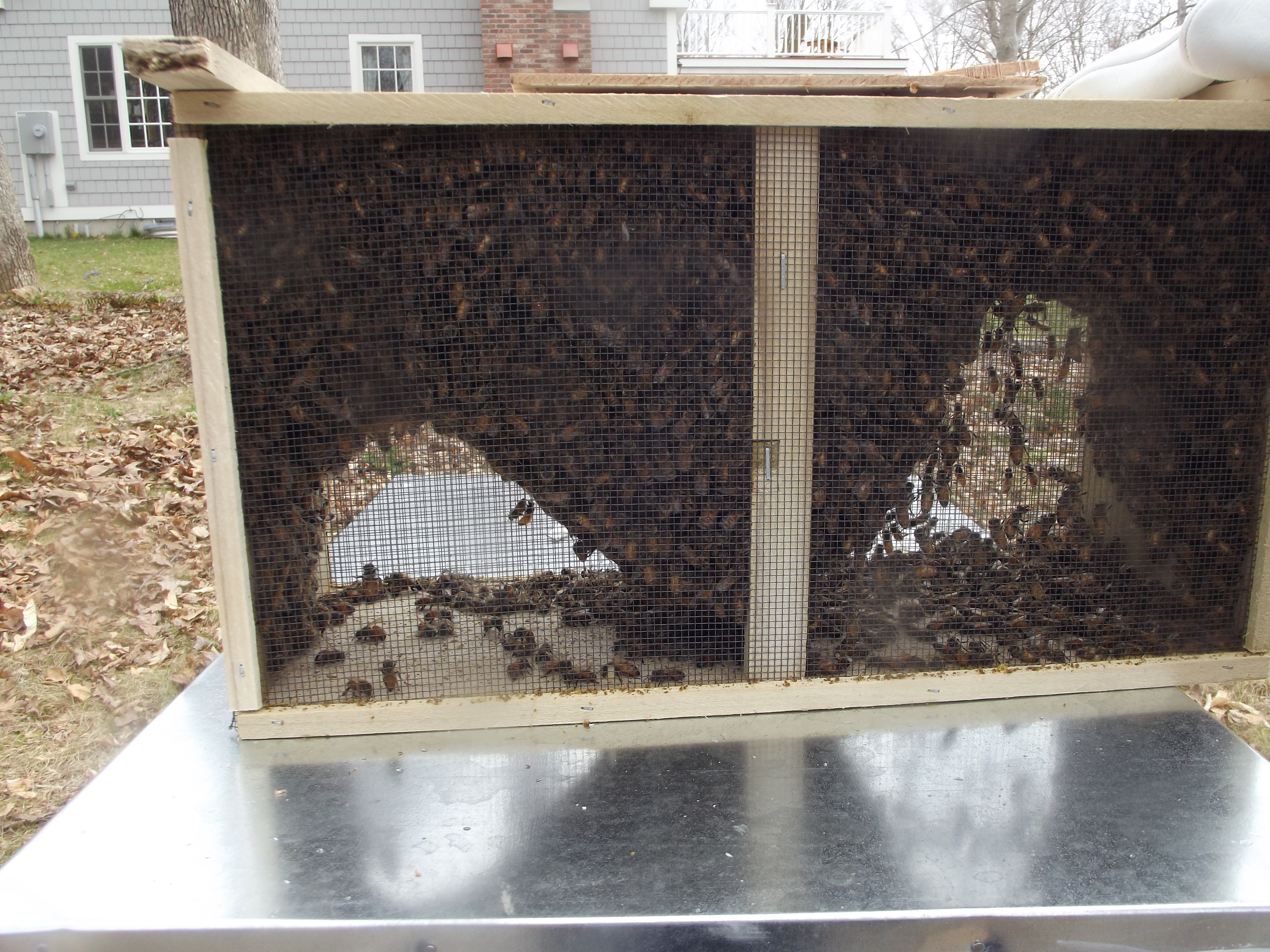I’m counting down the days again. Not the days until spring because it’s finally here. I’m counting the days until my first package of bees arrives. In my second year of beekeeping, I’m hoping it won’t be so nerve wracking to transport and install a package of bees. Here’s how it unfolded last year.
The bees were to be shipped from Georgia to a distributor where I was to pick them up. The April 4th date was approaching but spring was dragging its heels and I worried about their transition from southern climes to this chilly New England spring. Thankfully so did a lot of people; the new delivery date was set for April 18th. It dawned sunny and warmish. With an hour’s drive, I had time to think. How big are the boxes? I hope they fit into my car. Will I be able to install the hives correctly? The maples had barely started flowering yet and I had only seen a few brave dandelions in the yard, first sources of nectar for the bees in the spring. Would they have enough to eat? Did I have everything I needed to set up emergency sugar-water for them if necessary? I had 20,000 lives in my hands; I was nervous. Peering ahead through the tiny young leaves on the trees, I saw twenty or so people milling around a large out-building as I pulled into the driveway.
I found the owner and paid for my bees; $196.00 for two packages, which is approximately 1.02 cents per bee. A bargain. The others mostly seemed to be old hands at this beekeeping thing and were talking among themselves. After a few nods in greeting, I found a sunny spot out of the breeze to sit and people-watch while waiting for the delivery truck to arrive with its buzzing cargo. Georgia is a long way away and bees are relatively good travelers but the goal is to get them into their new homes as quickly as possible. A relay of drivers keeps them moving and this last driver, who pulled the overnight shift, looked sleepy as he pulled into the driveway, a large Dunkin Donuts coffee balanced on the dash, and maneuvered the truck around the parked cars. The back hatch swung up, revealing hundreds of packages of bees – hundreds – each with 10,000 bees. The packages were small rectangular boxes, essentially screened cages trimmed out in wood that would easily fit into my car, to my relief. A few bees clung to the outside but on this cold morning, they weren’t too energetic and stayed put. I wanted to hurry to get them home after their long journey but careening around corners and over bumps might upset them, let alone get me pulled over. I counted on the police officer letting me off if this happened; just one look in the back seat and he’d send me on my way. Though I had read and re-read the chapter on installing bees many times, and had talked with two experienced beekeepers, I was still nervous about this pivotal moment when I had 20,000 lives in my hands. They made the trip home with me in the back of my little Prius but I still had to get them into their new home. . .
April is fast approaching again and this time I’m more excited than nervous. This winter was a tough one for bees, with an estimated 40% loss of hives in the area compared to the usual 15%. I was among those who lost their hives to the freezing temperatures. It will be a welcome sight to look out my window at buzzing hives again.
Janice Sina, former biology teacher turned veterinary assistant, observes and writes about nature from her East Haddam home. She is a contributing writer to wisewomennow.com and has written for Dog Fancy Magazine and This I Believe (thisibelieve.org).


Follow Us!